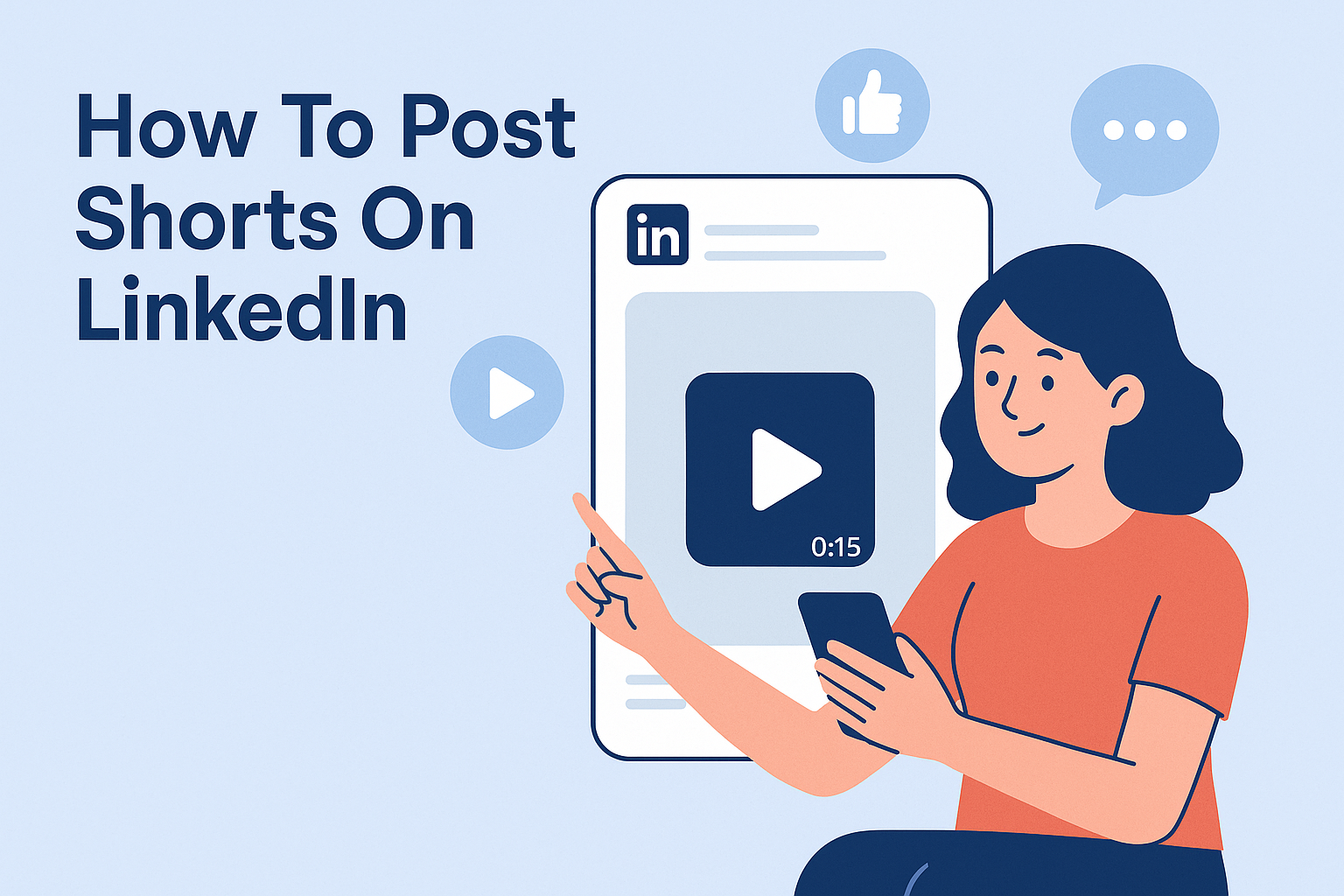LinkedIn has transformed professional networking with its latest feature: a vertical video feed designed for career-focused creators. This tool positions the platform alongside popular social media platforms while maintaining its unique professional edge. Unlike entertainment-driven reels on other apps, LinkedIn’s format prioritizes industry insights, skill development, and strategic connections.
The video content LinkedIn users share isn’t about viral dances—it’s about showcasing expertise. Professionals now leverage short clips to discuss trends, share project highlights, or offer career advice. This approach aligns with the platform’s mobile-first design, making it easy to create polished content directly from smartphones.
Whether you’re a seasoned marketer or new to digital networking, this guide simplifies the process. You’ll learn to craft compelling stories that resonate with decision-makers and peers. We’ll cover technical specs, creative strategies, and platform-specific best practices to maximize your visibility in the feed.
Key Takeaways
- LinkedIn’s vertical video tool targets career growth, not casual entertainment
- Content should emphasize industry knowledge and professional achievements
- Mobile creation features enable quick, high-quality video production
- Both desktop and mobile posting options accommodate different workflows
- Strategic video sharing boosts personal branding and network engagement
Introduction to LinkedIn Shorts and Professional Video Content
LinkedIn’s vertical video feed reimagines career conversations. Unlike entertainment-focused social media platforms, this space prioritizes meaningful exchanges between professionals. Imagine discussing market trends while commuting or sharing project wins during lunch breaks – that’s the rhythm of this feed.
Career-First Content Takes Center Stage
HR teams now film office culture snapshots. Job seekers create 60-second video resumes. Consultants break down complex strategies into snackable clips. This content format thrives on practical value:
- Software engineers demonstrating coding shortcuts
- Marketing directors analyzing campaign metrics
- Startup founders sharing pitch deck tips
“Our team’s day-in-the-life video tripled internship applications,” notes a tech recruiter. “Candidates want authenticity, not polished ads.”
Why Professionals Prioritize Short Clips
Decision-makers scroll LinkedIn during work hours. Bite-sized videos match their limited attention spans. A well-crafted clip can:
- Establish subject matter expertise faster than text posts
- Humanize corporate brands through employee stories
- Spark conversations with industry peers
The platform’s mobile-friendly tools make recording effortless. Users add captions and trim clips without switching apps. This frictionless experience encourages regular engagement from busy professionals.
Understanding the New LinkedIn Video Feed
The platform’s mobile-only video hub sits strategically between core networking tabs. This placement signals a shift toward bite-sized professional storytelling. Busy users can now scroll career insights as easily as checking updates or connections.
Exploring Mobile-First Features
Accessibility tools set this video feed apart. Creators enable auto-captions during uploads, while viewers adjust playback speeds. High contrast mode ensures visibility in bright environments – perfect for lunch break browsing.
Vertical clips blend seamlessly into existing workflows. Users upload through the standard media button, maintaining familiar posting habits. The app automatically formats content for the feed, eliminating technical hurdles.
Differences from Traditional Social Platforms
While resembling social media reels in format, content priorities differ sharply. A financial analyst explains: “My clips showcase data visualization techniques, not trending sounds. Engagement comes from practical value, not viral moments.”
The feature supports professional growth through:
- Industry-specific tutorials
- Project case studies
- Leadership thought pieces
This approach transforms phones into career development tools. Professionals consume videos during commute gaps or between meetings – moments rarely spent on entertainment-focused platforms.
How To Post Shorts On LinkedIn
LinkedIn’s video upload system balances accessibility with professional standards. Technical requirements ensure content displays properly across devices while maintaining quality. Let’s explore the specifications that help your clips stand out in the feed.
Video Specifications Demystified
The platform accommodates diverse production setups. Files can range from smartphone recordings (75 KB) to studio-grade uploads (5 GB). Duration flexibility allows quick tips (3 seconds) or detailed walkthroughs (10 minutes).
| Specification | Minimum | Maximum |
|---|---|---|
| Resolution | 256×144 | 4096×2304 |
| Aspect Ratio | 1:2.4 | 2.4:1 |
| Frame Rate | 10 FPS | 60 FPS |
| Bit Rate | 192 KBPS | 30 MBPS |
Preferred formats like MP4 and WebM ensure smooth playback. Convert legacy files from unsupported types like AVI before uploading. Vertical 9:16 ratio works best for mobile viewers scrolling through feeds.
Cross-Device Publishing Made Simple
Mobile users tap the media icon to record or select files. The app automatically optimizes content for the feed. Desktop uploads offer additional visibility controls and bulk editing tools.
Both interfaces allow caption editing and thumbnail selection. Video content performs best when tailored to viewer habits – 90% of users watch on phones during work breaks. Test horizontal and vertical formats to see what resonates with your network.
“We halved our upload errors after switching to MP4,” shares a media strategist. “Understanding specs transformed our client engagement rates.”
Step-by-Step Guide for Mobile App Posting
Mobile professionals can quickly share insights through LinkedIn’s optimized interface. The app prioritizes speed without sacrificing quality, perfect for capturing ideas between meetings or client calls.
Accessing the Home Feed and Video Tab
Launch the app and land on your personalized home feed. Spot the square pen icon in the top-right corner – your content creation hub. Tap it to reveal posting options, then select the three-dot menu for media choices.
Choose existing clips from your phone’s library or tap the camera symbol for instant recording. The interface automatically adjusts lighting and stabilizes shots, letting you focus on delivery. “Our sales team records product demos during trade shows now,” shares a retail manager. “No extra equipment needed.”
Editing and Adding Captions on Your Video
Trim clips using the slider before publishing. The caption field appears immediately after selecting your video. Craft punchy openings – only the first 75 characters show before the “See more” prompt.
Enable auto-generated subtitles through the CC button, then edit text for accuracy. Preview how your video feed entry will appear before hitting publish. This final check ensures professional presentation across devices.
Save drafts for later refinement or schedule posts during peak engagement hours. The mobile workflow turns spare moments into networking opportunities while maintaining your brand’s polished image.
Step-by-Step Process for Desktop Posting
LinkedIn’s desktop interface offers precision for video creators needing detailed control. The expanded workspace helps craft polished content while managing multiple elements simultaneously. Professionals handling complex projects often prefer this method for its organizational advantages.
Selecting Media and Adjusting Visibility Settings
Begin by clicking the “Start a post” box at your home feed’s top section. Choose the media icon from the bottom toolbar to launch your computer’s file browser. Supported formats appear instantly, letting you select multiple files for batch processing if needed.
The desktop uploader provides enhanced editing capabilities:
- Trim clips frame-by-frame
- Insert chapter markers for longer videos
- Preview thumbnail options side-by-side
Adjust audience settings before publishing using the dropdown menu. Options range from public visibility to targeted sharing with specific connections. A marketing director shares: “We use custom visibility for client case studies – our team reviews drafts internally before wider release.”
Leverage the spacious interface to refine text elements. Write detailed captions with proper formatting, and position hashtags strategically. The desktop environment particularly benefits creators working with 4K footage or multi-camera projects needing precise alignment.
Enhancing Your Video Content for Maximum Engagement
Professional video storytelling demands strategic refinement. LinkedIn’s native editing tools help polish clips while maintaining workflow efficiency. Focus on clarity and value – viewers prioritize actionable insights over production flair in professional settings.
Mastering Built-In Editing Features
The platform’s video editor offers three core functions. Trim clips to eliminate dead air while preserving key messages. Choose from four text overlay styles to emphasize crucial points:
- Headline: Bold statements for data-driven content
- Retro: Playful fonts for casual team updates
- Minimal: Clean typography for executive communications
- Classic: Balanced design for most professional scenarios
Auto-captions handle basic accessibility but lack customization. “We edit transcripts externally before uploading,” shares a social media manager. “Brand-aligned fonts and colors make our videos instantly recognizable.”
Optimizing for Silent Viewing
62% of professionals watch content without sound during meetings or commutes. Combine visual cues and text to convey messages effectively:
- Animate key statistics using simple transitions
- Use lower-thirds to identify speakers
- Highlight quotes with contrasting colors
Third-party tools like Adobe Premiere Rush or Canva enhance branding beyond LinkedIn’s capabilities. Maintain consistency across short-form video elements – from intro sequences to closing CTAs – to reinforce professional identity.
“Our tutorial views increased 140% after adding custom captions,” notes a cybersecurity trainer. “Viewers engage longer when they can read technical terms accurately.”
Leveraging Tools and Best Practices for Professional Videos
Professional video creation demands smart tools and strategic approaches. Specialized platforms like BigVu streamline production for busy experts. Their teleprompter features and customizable templates help maintain eye contact while delivering crisp messages.
BigVu and Other Video Production Tools
This toolset solves common challenges in short-form video creation. Auto-caption synchronization ensures accessibility across social media channels. Cloud storage lets teams collaborate on scripts and branding assets securely.
Other platforms offer unique advantages:
- Clipchamp’s drag-and-drop editor simplifies multi-format exports
- Descript’s AI voice cloning maintains vocal consistency
- Canva’s brand kits ensure visual alignment
Tips for Crafting Captivating Short-Form Content
Start with clear objectives – teach one skill or share one insight per clip. Use quick cuts between scenes to maintain energy. End with actionable advice that viewers can get started implementing immediately.
Boost engagement through strategic framing:
- First 3 seconds: State the core benefit
- Middle section: Demonstrate solutions
- Final frame: Include a text-based CTA
Analytics from media platforms reveal optimal posting times and content types. Test different video lengths and styles, then double down on what resonates with your professional audience.

